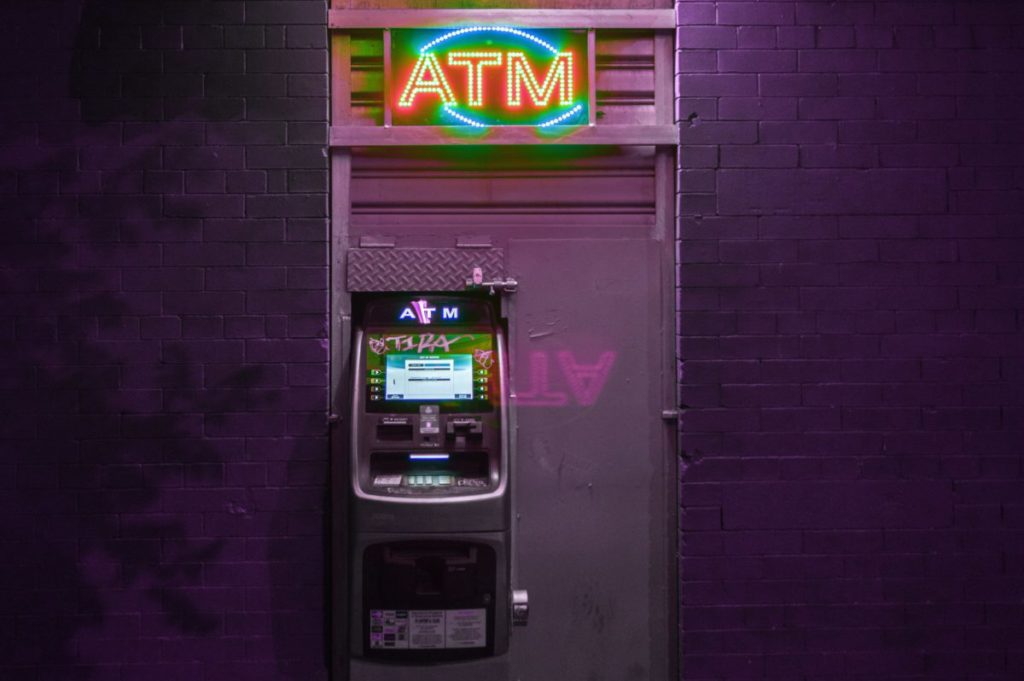What is the best way to pay for things and handle local currency when traveling outside of the United States? That depends on what BEST means for you. Least expensive? Most convenient? Would you like to be able to track your expenses in one place? What’s the safest method that would protect you from theft — cyber or otherwise? What if you don’t trust ATMs? (You know who you are.) What if your credit terms are not as favorable as Aunt Lydia’s who steadfastly advises you to use a credit card? Because there are so many variables, it’s important to do your homework.
1. Using Credit Cards
Don’t leave home without them, right? Before you leave on your trip, compare the terms of different credit card and bank accounts to decide if one is better than another. Ask the following questions:
- What fees do they charge to use your credit cards abroad for purchases and to withdraw cash?
- Do they charge ATM withdrawal fees?
- Do they charge foreign transaction fees? Remember that withdrawing cash from a credit card — a cash advance — is different than withdrawing from your bank account and will often incur higher interest rates.
- What conversion rate do they use? Specifically, what are they charging TODAY? Then compare that rate to the actual conversion rate to see if there are hidden fees. Usually there is. The question is how much? To compare rates with the daily rate, use www.xe.com or their handy smart phone app.
Also be sure to contact your credit card companies and inform them about your travel plans (country you are visiting and dates) and jot down the toll free international phone number. All of this can usually be done online through the bank’s website, or you can call. Once overseas and you use your card, the bank (hopefully) will not freeze your account because they know it is you buying chocolate in Switzerland. But if an overzealous fraud prevention department freezes your account anyway, contact the bank online/by phone to verify all is well and get it working again. This takes 5 minutes.
PROS | For some, charging purchases to a credit card feels easy and keeps a record of expenses in one place. Purchases may accrue points/miles and there is a sense of security if cards are lost, stolen, or used fraudulently, because most banks will help you out and reverse inappropriate charges. If your credit account does not charge any foreign transaction fees (MOST DO) and gives you a competitive conversion rate, then this could be a smart option.
CONS | Visa and MasterCard are widely accepted around the world, but Discover and American Express may not be, depending on the location. Many small businesses, including B&Bs, don’t accept credit cards. And no matter what, you will need some cash for minor purchases. Most credit cards charge 1-3% on international transactions. Be warned, many companies that claim they do not charge international transaction fees are hiding a fee in a padded conversion rate. It may go without saying but, beware that using credit cards can be the quickest way to blow a spending budget. We’re not naming names, but remember, you have to pay the bill when you get home!
TIP | Often when making purchases abroad, a merchant will ask if you’d like to charge your card in US dollars or the local currency. Always choose the local currency. While it sounds like a nice option, this is a legal way for merchants to make a little extra from a padded conversion rate.
When paying by credit card in another country, if given a choice always choose the local currency instead of dollars for the transaction. Share on X
- Legitimate ATM
- Not-so-legitimate ATM
2. Withdrawing Local Currency From ATMs
No, you can’t pay for things in Italy with US dollars (USD). That may seem obvious, but new travelers are often unsure. Think about it. Would your local supermarket take Pesos?
The currency throughout most of Europe is the Euro (€). The exceptions are Bulgaria (Lev), Croatia (Kuna), Czech Republic (Koruna), Denmark (Krone), Hungary (Forint), Poland (Zloty), Romania (Leu), Sweden (Krona), and the United Kingdom (Pound Sterling). So, why do most travel experts advise us to use ATMs?
PROS | This is almost always the least expensive and most convenient way to convert US dollars to the local currency. (Ask your bank all the same questions in the bullet points above, so that you can compare costs.) ATMs are everywhere, even in most small towns. And, there is still a sense of security because banks will replace your card quickly if it is lost or stolen, and most will restore any losses to fraud.
CONS | US banks often charge an ATM fee per international withdrawal — about $5 — on top of the standard conversion rate and foreign transaction fees, if any. On the other hand, many foreign banks don’t charge a fee to use their ATMs, so you aren’t being dinged twice and the $5 withdrawal fee is pretty good compared to the 1%-3% on each purchase charged by most credit cards.
TIP | Minimize ATM fees by asking your bank to increase your daily withdrawal limit (fewer withdrawals = fewer charges). One exception: If you need to withdraw cash upon arrival at the destination airport, only withdraw a small sum, as typically the exchange rates at airport ATMs are quite high.
Before you leave home to travel abroad, call your bank to request an increase in your daily ATM withdrawal limit. Share on X
3. Exchanging Currency at Home or Abroad
Despite the ease and lower cost of credit cards and ATMs, many (and I mean many) travelers still use banks and exchange bureaus to convert dollars to a foreign currency. We’ve asked why, and the answers boil down to comfort zone and perceived ease.
PROS | Some people like the simplicity of physically exchanging currency for their entire trip all at once. They feel more comfortable using their banks at home or think it will be too bothersome to find ATMs while trying to enjoy their vacations. Also, if you are watching the exchange rate fluctuations leading up to your trip you could take advantage of a favorable rate.
CONS | This is the most expensive route and so we strongly advise against it. Fees are often hidden in a higher conversion rate. Plus, you will be carrying a lot of cash on you that can easily be lost or stolen. Using an ATM in another country is no harder than using one at home.
TIP | Many people change a small amount of money to foreign currency before they leave, just so that they don’t feel stranded at the airport upon arrival. At the end of your trip, instead of buying another T-shirt to use up leftover Euro or Pounds, consider hanging on to that money to have ready for your next vacation. You are now a world traveler. There will be a next adventure!
Save your leftover foreign currency for your next trip! Share on X
4. Traveler’s Checks
Who remembers all those American Express commercials? The world has changed a lot since then, hasn’t it? Traveler’s checks are a thing of the past — before there was a global economy and the internet.
PROS | Traveler’s checks offer safety from theft and a quaint sense of nostalgia.
CONS | Thanks to the global economy and new technology, traveler’s checks are, for all intents and purposes, obsolete. You will have a hard time purchasing them and it will be close to impossible to spend them abroad. You’ll be stuck going to currency exchange bureaus — and paying high fees — to convert them to cash.
TIP | Don’t even think about it!
Traveler's checks are obsolete — don't waste your time. Share on X
5. Download Our Handy “Money Abroad” Checklist
We’ve put together a checklist of money-related items to consider before leaving on your next trip. We’d like to hear from you. Tell us some of your tips on how to handle money abroad. Are there differences when traveling in Asia, South America, Africa and other exotic locales? Let us know in the comments section.
TIP | Download your checklist here.
Download this handy 'Money Abroad' checklist before your next trip. Share on X
Happy travels!
–Shella





